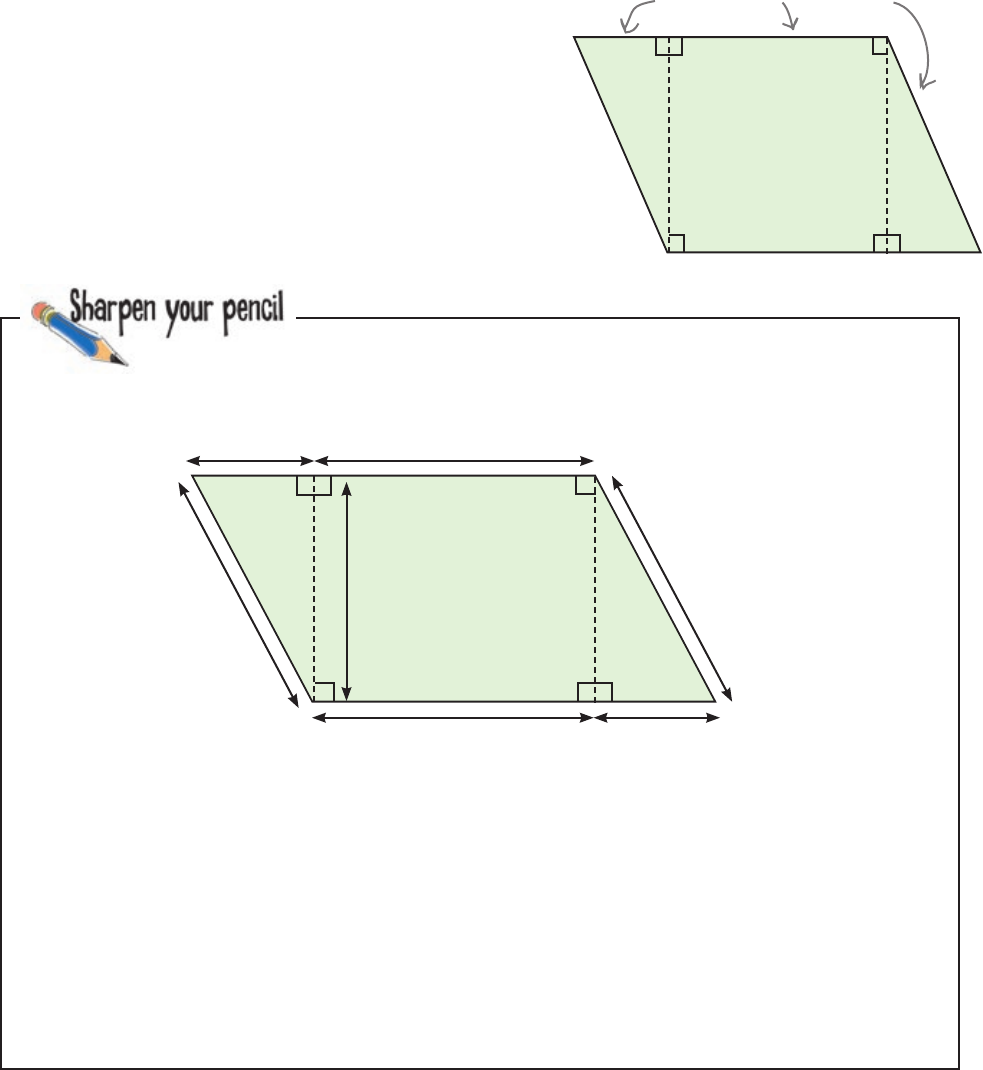
quadrilaterals
Let’s split the parallelogram
Think back to your work in previous chapters. When you needed
to find the total area of a shape you were unfamiliar with, you split
your shape up into other simpler shapes you were more familiar
with.
If you look carefully, you’ll see that the parallelogram is actually
made up of a central rectangle, with a right angle triangle on either
end. This means that to find the area of the parallelogram, we can
find the areas of these shapes, and then add them up together.
You can spli
t a para
llelogram int
o
a r
ec
tangle and t
w
o tr
iangles.
What’s the total area of the lawn that Edward has asked you to
mow? How much should you charge? We’ve added on some extra
measurements to get you started.
18 meters
16 meters
20 meters
20 meters
12 meters
12 meters
18 meters
you are here 4 239

sharpen solution
What’s the total area of the lawn that Edward has asked you to
mow? How much should you charge?
18 meters
16 meters
20 meters
20 meters
12 meters
12 meters
18 meters
Area triangle 1 = 12 x 16 x 1/2
= 96 meters
2
Area of parallelogram = Area triangle 1 + Area rectangle + Area triangle 2
=96 + 288 + 96
= 480 meters
2
Charge = $0.10 x 480 = $48.00
Area triangle 2 = 12 x 16 x 1/2
= 96 meters
2
Area rectangle = 18 x 16
= 288 meters
2
240 Chapter 6
Get Head First 2D Geometry now with the O’Reilly learning platform.
O’Reilly members experience books, live events, courses curated by job role, and more from O’Reilly and nearly 200 top publishers.

